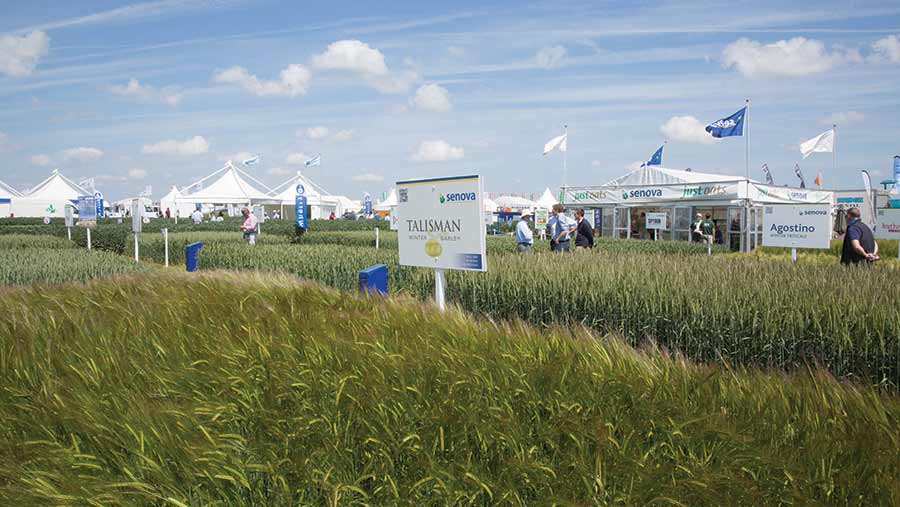New risk rating will deliver crop varieties with more reliable yields
 © Tim Scrivener
© Tim Scrivener Some varieties perform better than others when things don’t go according to plan and this resilience will be a key feature of strong varieties in the future, aided by a new risk rating.
When choosing a winter wheat variety on the newly published AHDB Recommended List, the first thing growers are likely to consider is the end market, suggests Simon Oxley of AHDB.
The second may be the treated yield and quality characteristics, and then they might think about standing power and disease susceptibility and yield. Currently no RL varieties have a rating above 7 for those two diseases and we want to see some 8s and 9s.”
AHDB perspective
Simon Oxley, research and knowledge transfer manager, AHDB
“Product withdrawals, lack of new chemistry and challenging weather mean varieties increasingly need to be able to stand up for themselves in the fight against disease and lodging. That is why we are looking at ways to recommend winter wheat varieties with an exceptionally strong positive balance of features that perform reasonably well under variable conditions. We aim to guide growers and influence breeding programmes of the future.”
However, varieties with a high untreated yield rating typically show good resistance to lodging and to key diseases septoria and rust.
They may not be top yielders, but being lower-risk, they are important to sustainability, he stresses.
See also: Promising variety candidates see growers spoilt for choice
“We think the crucial feature of a strong variety in the future will be resilience.
“You will need to be able to produce predictable yields in unpredictable situations to maintain profitability,” Dr Oxley says.
The effect of global warming could further interfere with disease management programmes, and there i s a strong possibility more fungicide actives will be lost through legislative change or the build-up of resistance, he warns.
With the goalposts changing, the Recommended Lists Board and Wheat Crop Committee are looking in particular at the relationship between the agronomic merit of a variety, based on disease and lodging resistance, and the benefit of treatment (the difference between the treated and untreated yield).
It has been proposed that an agronomic merit score be calculated for each variety to aid in the identification of candidate varieties that are at higher or lower relative risk when compared with currently recommended varieties.
Research reasons
By improving our understanding of varietal resilience under adverse conditions, this project should give growers the confidence to try unfamiliar varieties of winter wheat that aren’t necessarily top yielders.
Project: Defining the relative risk of winter wheat varieties
Timescale: January 2015 to January 2020
Researchers involved: AHDB
Funders: AHDB
Key points
- Reviewing historic Recommended List (RL) data alongside new trial data is differentiating winter wheat varieties for sustainable systems
- Relative risk ratings will later be used in the selection of other crops for inclusion in the RL
Rather than be a component of the list, the relative risk ratings will form part of the selection criteria when making up the list.
A similar approach could be used for other crops and to aid the selection of candidate varieties from data/ratings supplied by the National List, he says.
Dr Oxley and Jenna Watts of the AHDB Cereals & Oilseeds team are using RL and national trials data collected across several seasons to tease out the differences between varieties in their stability.
A high untreated yield across UK trials usually denotes a variety that can perform well without fungicides and cope with unusual weather.
For relative risk calculations, different weightings are awarded for response to diseases. For example,
Revelation has a good relative risk rating compared with, for example, Kielder, which has a yellow rust weakness. In practice, where that disease is not common, there is no need to worry about Kielder, says Dr Oxley.
The AHDB is also introducing new field trials as a stress test where it needs more information about a variety’s resilience, or where new strains of a pathogen are complicating the picture.
The RL selection process must keep up to date with field issues.
Equally, the RL must not stifle breeding innovation, he adds. Due to the timescales involved in bringing new varieties to the market, the AHDB believes it is crucial to act now to stimulate the development of varieties that will be fit for purpose in the future farming landscape.
“Treated yield has been uppermost in plant breeders’ minds for some time, but we want to promote the concept of relative risk to give them the opportunity to focus on other criteria in breeding programmes.
“Recognising the value of agronomic merits on the RL means the breeders are not going to lose out if they compromise slightly on yield.
“It is about giving plant breeders more confidence in putting forward varieties with say, septoria or fusarium resistance, at the expense of

